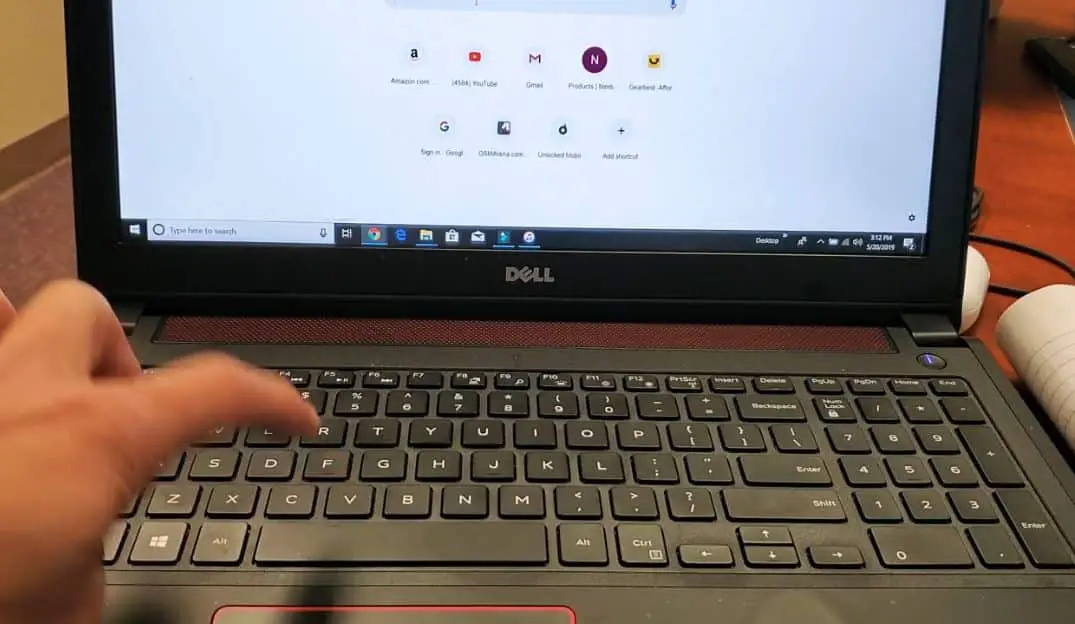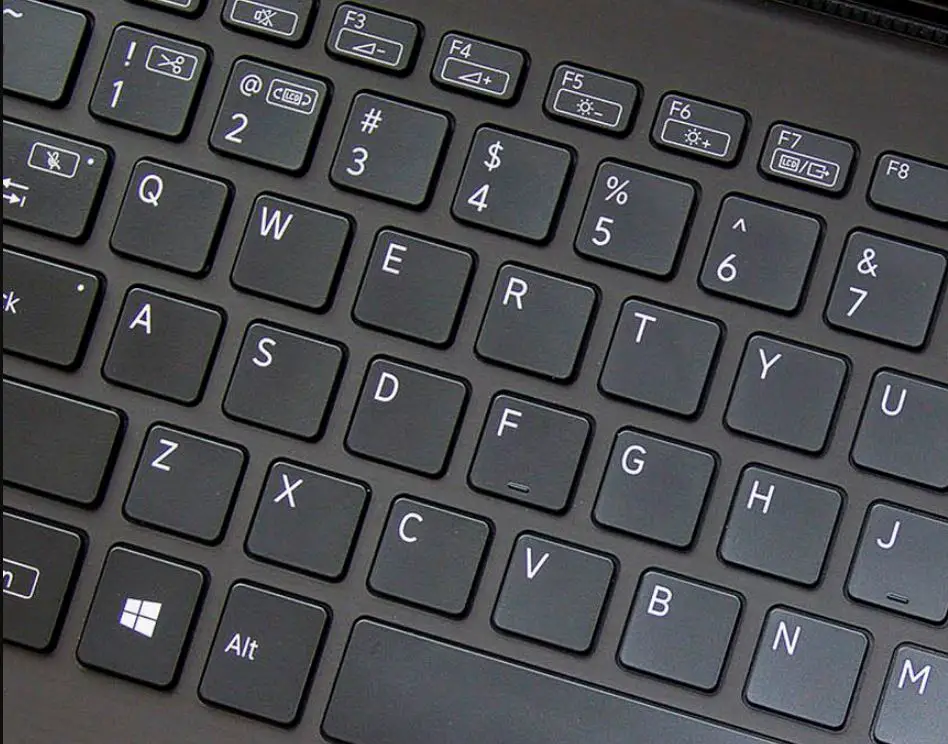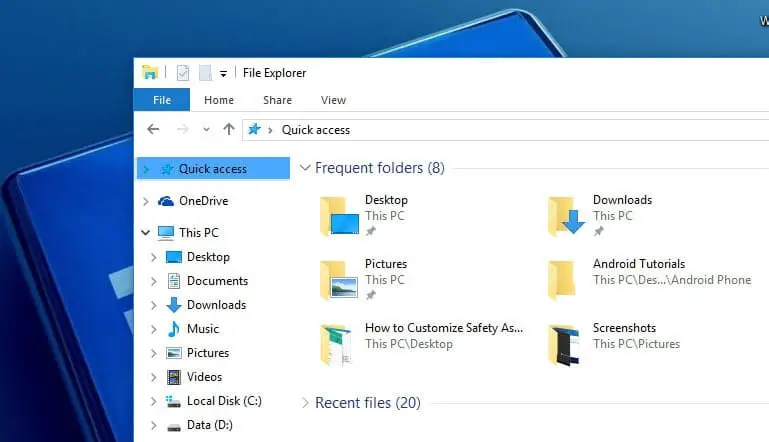What is a shortcut key?
Before moving forward let’s first understand, what is a keyboard shortcut and how it works? In simple words, windows keyboard shortcuts or Hotkeys are a single or a set of combinations that execute commands in a windows computer. For example keyboard shortcut Ctrl + A used to select all texts, and to use this shortcut you need to press and hold down the Ctrl key and then press the A key.
1 What is a shortcut key?1.1 Most commonly used Windows Keyboard Shortcuts1.2 Control Key Shortcuts1.3 Alt Key Shortcuts1.4 Function key keyboard shortcuts1.5 File Explorer Shortcuts1.6 Command prompt Shortcuts
There are more than 100 hotkeys to execute a varied set of commands. Well, certain hotkeys and combinations are used on regular basics and some keyboard shortcuts are far from the mainstream because they have such little usage.
Most commonly used Windows Keyboard Shortcuts
There are certain hotkeys that absolutely make your productivity efficient such as capturing a screenshot on your desktop, switch between tabs or copy and paste content etc.
Windows key + I Using this simple shortcut you can quickly open the All Settings window. Since Microsoft is slowly unifying all the control panel items with the modern Settings app, this is one of the most useful shortcuts of Windows 10 and 11. Windows + AOne of the best things about Windows 10 is its universal notification center or the action center. Using the keyboard shortcut “Win + A,” you can easily open and see all the current notifications in the panel. There is no need to click on that small icon on the taskbar. Windows + S Using the Windows + S keyboard shortcut you can quickly open the start menu search function And its powered by Bing search engine. Here you can type in your search query, and search for it both on your PC and on the Web. Windows key + C This shortcut launches Cortana in listening mode. This shortcut is quite useful if you haven’t enabled or aren’t using the “Hey, Cortana” feature. Windows key + Alt + G This combination records the last 30 seconds of an active game on your system. Windows key + D Using this combination will minimize and maximizes all other programs and take you to a clean Desktop screen. Windows key + P Ppens the project a screen icon and lets the user choose how they want to split/distribute the screen. Windows key + X Opens a short easy access context menu from the Start button. Windows key + L locks the system Windows key + E opens File Explorer. Windows key + R opens the Run command Windows key + N opens the notification panel. Windows key + W opens up the new widgets pane. (Windows 11) Windows key + Z open the Snap Layouts on the top-right of the screen. (Windows 11) Windows Key + Alt +T -Show/hide recording timer. Windows Key + Alt + G – Record current app screen. Windows Key + Alt + M – Enable/disable audio recording (microphone) Windows Key + Alt + R – Start/Stop Recording. Windows + K – Connect to wireless devices Windows + PrtScn – Take screenshot Win + V opens your system’s Clipboard History. Win + Alt + PrtSc takes a screenshot during an active game. Alt + F4 – Open shut down/restart menu or close the current window Win + Alt + T shows/hides the recording timer of an active game. Win + Pause opens the About page which contains all your system information. Win + Spacebar allows the user to switch input language and keyboard layout Win + Ctrl + D – The addition of Virtual Desktops is one of the best things to happen to Windows 10. Using this quick keyboard shortcut, you can create and open a new virtual desktop. Win + Ctrl + Left or Right Arrow Keys – If you have multiple virtual desktops opened for different works, then use this keyboard shortcut to navigate between the virtual desktops. Win + Ctrl + F4 – You can use this shortcut to quickly close a virtual desktop. Don’t worry – any opened programs in the virtual desktop will be transferred to the main desktop workspace. Win + Tab – This shortcut lets you access the new Task View feature in Windows 10 which displays all your opened programs and your virtual desktops.Windows + E – Launch File Explorer Win + Ctrl + F opens a window to allow the user to search for PCs in a shared network. Ctrl + Alt + Tab – This quick shortcut lets you see all the apps that are currently opened on your desktop. It looks like “Alt + Tab,” but you need to use your mouse or arrow keys to choose the program. Shift + Left / Right / Up / Down – Moves the cursor left a character, write a character, up a line, or down a line, selecting the text along the way. Continue pressing arrow keys to select more text. Ctrl + Shift + Left / Right – Moves the cursor one word to the left or right, selecting that word along the way. Shift + Home / End – Moves the cursor to the beginning or end of the current line, selecting text along the way. Shift + Page Up / Page Down – Moves the cursor up or down a screen, selecting text. Ctrl + Shift + Home / End – Moves the cursor to the beginning or end of the “screen buffer,” selecting all text between the cursor and the beginning or end of the Command Prompt’s output.
Control Key Shortcuts
Ctrl + A combination selects all the text/contents in a page or document in one go. Be a little careful when using this combination because it also copies all hidden content along with the other text.Ctrl + C is the keyboard combination for copying all content. It is used after a Ctrl+A or a Shift+Arrow commands that select a bunch of content that needs to be copied. Windows 11 has taken things a little further and also added a copy and paste icon in the top ribbon to facilitate ease of use. Nevertheless, the combinations are preferable.Ctrl + V allows the user to paste the copied or cut items in the location of the user’s choice.Ctrl + X lets you cut the items entirely from one location. Use this combination carefully so that you don’t lose precious data accidentally.Ctrl + Y lets you redo whatever Ctrl+Z undid.Ctrl + Z allows the user to undo any action that took immediately before using the combination. A great function in case anything goes wrong when you’re using the cut, copy, paste combos.Ctrl + F helps the user search an entire page using the search bar and specific keywords.Ctrl + S is the handiest combination when you’re editing a document by letting you save the file without having to go through the arduous process of saving from the File tab.Ctrl + D lets you selectively delete the selected item(s) in File Explorer (or add a bookmark in supporting browsers).Ctrl + Shift + S Whenever you want to rename a document or save its final version, this combination acts as the Save As button.Ctrl + O is a combination in which the O stands for Open and is used to open a URL, document, image, or other file types.Ctrl + Shift + Esc works in Windows 11 just the way it worked on Windows 10. This combination will open the Task Manager.Ctrl + P lets the user print the current page.Ctrl + L jumps to the address bar in File Explorer or supporting apps like Chrome browser.Ctrl + V or Shift + Insert – Pastes text at the cursor.Ctrl + C or Ctrl + Insert – Copies the selected text to the clipboard.Ctrl + A – Select all text in the current line if the line contains text
Alt Key Shortcuts
Alt + Left arrow enables the user to go back to the previous file or folder. Alt + Page Up lets the user navigate and move up one screen. Alt + Page Down lets the user move down one screen. Alt + Esc allows the user to browse through all the apps on the taskbar. Alt + F8 is a hotkey combination that displays the user’s password on the login screen. Alt + Spacebar together enables the user to open the shortcut menu for the current window. Alt + F10 – opens the context menu (right-click menu) for the selected item. Alt + Tab – allows the user to switch between multiple running applications. Alt + F4 – enables the user to close an active application. In case the user is using a Desktop, this command will open the Shutdown box to shut down, restart, log out or put the user’s PC to sleep.
Function key keyboard shortcuts
You will found the function keys or F keys lined across the top of the keyboard and labeled F1 through F12. These keys act as shortcuts and perform certain functions such as refresh the web page, saving files, printing data etc. F2 allows a user to rename a selected file or folder. F3 activates the search bar in the browser. F4 activates the address bar in File Explorer. F5 refreshes an active window on a browser as well as the File Explorer. F6 recognizes individual tabs so that you can scroll them or take action in File Explorer. F7 activates the cursor to act as a mouse and navigate a page on Chrome. F10 activates the cursor to allow the user to navigate their screen without a mouse. F11 allows the user to enter and exit the full-screen mode.
File Explorer Shortcuts
Ctrl + E allows the user to open the search box in the file explorer. Ctrl + N enables the user to open the current window in a new window. Ctrl + W closes an active window. Ctrl + Mouse Scroll allows the user to change the file and folder view. Ctrl + Shift + N allows the user to quickly create a new folder. Ctrl + Shift + E hotkey combination expands all subfolders in the navigation pane on the left. Alt + D selects the address bar of the File Explorer so that you can look for a specific location in it. Alt + P combination displays the preview panel. Alt + Enter opens the properties for the item selected by the user. Num Lock + plus (+) allows the user to expand the selected drive or folder. Num Lock + minus (-) allows the user to collapse the selected drive or folder. Num Lock + Asterisk (*) this hotkey combination enables the user to expand all the subfolders under the selected drive or folder. Alt + Right arrow lets the user go to the next folder. Alt + Left arrow (or Backspace) lets the user go to the previous folder Alt + Up arrow allows the user to access the parent folder the sub-folder is located in. Right Arrow key allows the user to maximize a current folder tree or select the first subfolder (if it’s expanded) in the left pane. Left Arrow Key allow the user to collapse a current folder tree or select the parent folder (if it’s collapsed) in the left pane. Home lets the user move to the top of the active window. End lets the user move to the bottom of the active window.
Command prompt Shortcuts
In Windows 10, Microsoft made some small but welcome improvements to the good old Command Prompt. Here are some of the shortcuts that are quite helpful in daily activities.
Ctrl + Home – is the combination used to scroll right to the top of the Command Prompt. Ctrl + A – Most of you know what this shortcut does, select all in the active window. Even in the comment prompt, this shortcut does the same thing, it selects all the text. Ctrl + C – you can simply use the general keyboard short “Ctrl + C” to copy the text or the output in the Command Prompt. Alternatively, you can also use the shortcut “Ctrl + Insert.” Ctrl + V – you can use the general shortcut “Ctrl + V” to paste text or commands into the Command prompt. Alternatively, you can also use the shortcut “Shift + Insert.” Ctrl + M – Using this shortcut, you can enter into Marker mode so that you can select the text or output using the Shift and Arrow Keys. Ctrl + End – This combination allows the user to scroll to the bottom of the Command Prompt. Page Up – moves the cursor to the page before the one the user is currently on. Page Down – moves the cursor to the next page. Ctrl + M allows the user to enter Mark mode. Ctrl + Home (in Mark mode) this hotkey com allows the user to move the cursor to the beginning of the buffer. Ctrl + End (in Mark mode) allows the user to move the cursor to the end of the buffer.Up or Down keys allow the user to go through the command history of an ongoing session. Left or Right keys allow the user to move the cursor to the left or right in a current command line. Shift + Home combination allows the user to move the cursor to the start of the current line. Shift + End combination moves the cursor to the end of the current line. Shift + Up moves the cursor up by one line and selects the text. Shift + Down moves the cursor down by one line and selects the text. Ctrl + Up arrow moves the screen up by one line in the output history. Ctrl + Down arrow combination moves the screen down by one line in the output history. Ctrl + Shift + Arrow Keys: Move the cursor one word at a time. Ctrl + F lets the user open search for Command Prompt. Also read:
Microsoft Edge won’t play YouTube videos on windows 10? Here how to fix5 Secret tweaks to Speed Up Microsoft Edge browser on windows 10Fix Windows 10 critical error start menu Cortana aren’t workingWindows resource protection could not start the repair service windows 10





